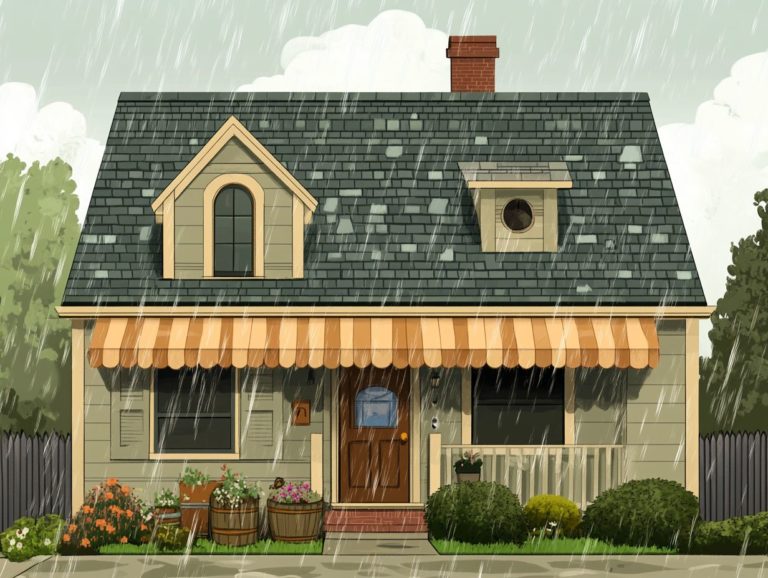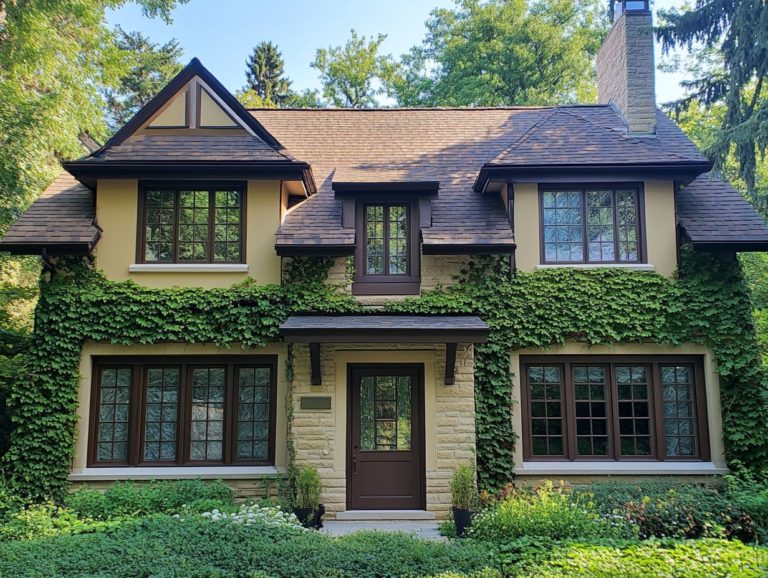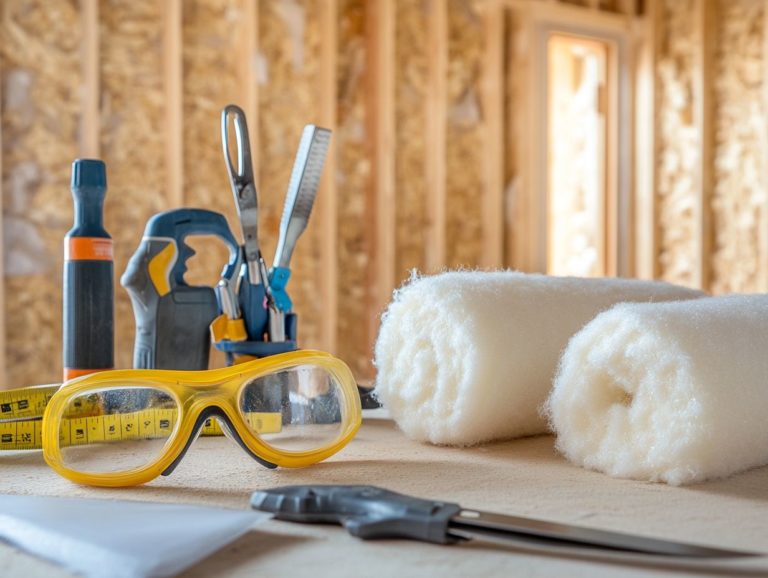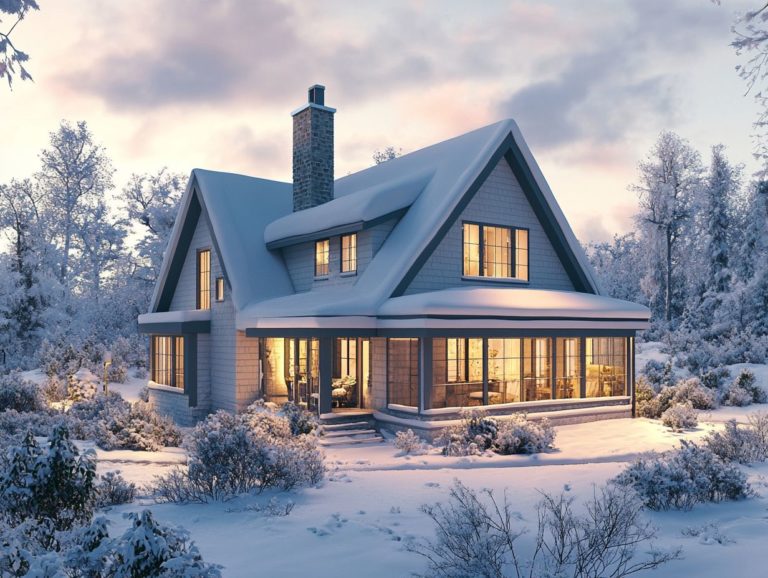5 Essential Insulation FAQs Answered
Insulation is essential for creating a comfortable and energy-efficient home. Yet, many homeowners are uncertain about its significance and the different types available.
Let s dive into your top questions about insulation! This guide helps you grasp what insulation is, why it matters, and how to determine how much you need. It also points out signs indicating your insulation may not be up to par.
Whether you’re contemplating a DIY project or looking into professional services, this guide provides insights into the benefits, costs, and environmental impacts of insulation.
Elevate your home’s comfort and efficiency with the right choices! Don t wait until it s too late check your insulation today!
Contents
- Key Takeaways:
- 1. What Is Insulation and Why Is It Important?
- 2. What Are the Different Types of Insulation?
- 3. How Much Insulation Is Needed for a Home?
- 4. What Are the Benefits of Proper Insulation?
- 5. How Can I Tell If My Home Needs More Insulation?
- 6. What Are the Common Signs of Inadequate Insulation?
- 7. Can Insulation Help with Energy Efficiency?
- 8. How Does Insulation Affect Indoor Air Quality?
- 9. Does Insulation Help with Soundproofing?
- 10. How Can I Ensure Proper Installation of Insulation?
- 11. What Factors Affect the Cost of Insulation?
- 12. Is DIY Insulation Installation Recommended?
- 13. Can Insulation Be Added to an Existing Home?
- 14. What Are the Environmental Impacts of Insulation?
- 15. How Often Should Insulation Be Replaced or Updated?
Key Takeaways:
- Insulation improves energy efficiency and indoor air quality.
- Regular maintenance ensures optimal performance.
- The right insulation reduces your energy bills.

1. What Is Insulation and Why Is It Important?
Insulation is a key player in your home’s energy efficiency. It minimizes heat loss and gain, significantly impacting your energy bills and overall indoor comfort.
Insulation helps maintain a stable indoor climate, which is essential for reducing your reliance on HVAC systems and maximizing performance.
Understanding the different types of insulation, their materials, and their U-values a measure of how well insulation resists heat flow is crucial for enhancing your property s energy efficiency and tackling issues like air leakage and moisture control.
You’ll find various types of insulation, such as:
- Fiberglass: Versatile and affordable.
- Cellulose: Made from recycled paper and excels in sustainability and thermal performance.
- Polyurethane spray foam: Offers superior air sealing properties, ideal for hard-to-reach areas.
By collaborating with a knowledgeable insulation contractor, you can ensure you receive customized insulation solutions tailored to your specific needs. This not only enhances your building s fabric but also prolongs the life of your structure while promoting substantial energy savings.
2. What Are the Different Types of Insulation?
You have a variety of insulation types at your disposal, each with unique benefits tailored to meet specific needs in your home.
Each type has its own R-value, which measures resistance to heat flow and plays a crucial role in energy efficiency.
For example, fiberglass insulation typically falls within an R-value range of 2.9 to 4.3 per inch, making it practical for spaces like attics and walls.
Cellulose insulation offers a blend of energy efficiency and soundproofing, with an R-value of approximately 3.2 to 3.8 per inch.
If you’re seeking superior insulation performance, polyurethane spray foam stands out with an impressive R-value of 6.3 to 7.0 per inch, though it does come with a higher price tag.
Sound insulation becomes particularly important in multi-family buildings, where noise transmission can be a significant concern.
There are also eco-friendly options like cellulose, which supports sustainability by utilizing recycled materials and promotes a healthier environment. This enables you to make responsible and effective choices for your home.
Which type of insulation do you think would work best in your home?
Ready to transform your home s comfort? Let s get started on your insulation project today!
3. How Much Insulation Is Needed for a Home?
To determine how much insulation your home needs, understand insulation levels and R-values. Consider the specific requirements of your climate and building design to ensure optimal thermal efficiency and energy performance.
You should conduct an energy audit to accurately assess these needs. This process helps you pinpoint areas where heat loss occurs and evaluate your existing insulation levels.
During the audit, pay close attention to R-value recommendations for different areas. For instance, attics typically require a higher R-value, ranging between 30 to 60. In contrast, crawlspaces generally need around R-19 to R-30 to provide adequate thermal protection.
By understanding these guidelines, you can keep your living spaces comfortable throughout the year, reduce your energy costs, and minimize your environmental impact.
4. What Are the Benefits of Proper Insulation?
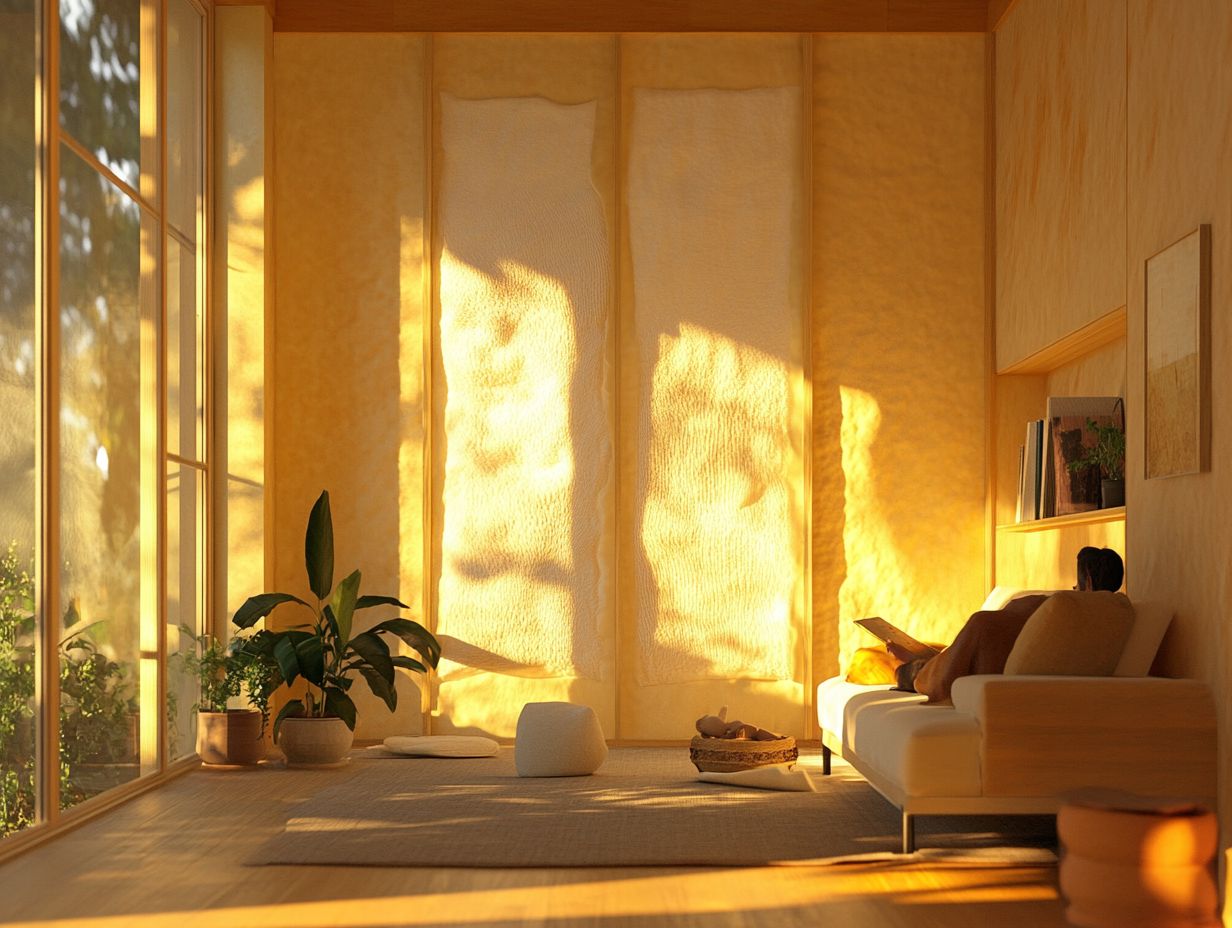
Proper insulation brings a wealth of benefits that elevate your living experience. You’ll enjoy enhanced energy efficiency, reduced heat loss, improved moisture control, and effective sound insulation. To maximize these advantages, consider the 5 things to consider when insulating. All these factors work together to lower your energy bills and create a more comfortable home environment.
When you invest in quality insulation, you ll likely notice a remarkable drop in your monthly heating and cooling costs sometimes saving up to 20% on your annual energy bills. That s potentially hundreds of dollars each year, which you can redirect toward other home improvement projects or delightful family activities.
Effective moisture control safeguards your property from mold and mildew while significantly enhancing your indoor air quality. Families residing in well-insulated homes often report fewer allergies and respiratory issues, fostering a healthier atmosphere for everyone, including your little ones.
Improved sound insulation creates a peaceful retreat from the hustle and bustle of the outside world, allowing you to relish your personal space without unwelcome disturbances.
5. How Can I Tell If My Home Needs More Insulation?
To determine if your home requires additional insulation, start by assessing the effectiveness of your current insulation. Observe any signs of air leakage and conduct an energy audit to identify areas that might be lacking.
Begin with a visual inspection: look for gaps around windows and doors, and check for discoloration in walls or ceilings, which could indicate moisture problems.
Simple temperature checks can also reveal cold spots in your home, hinting at insufficient insulation in those areas.
If you’re seeking a thorough evaluation, consider enlisting the expertise of an insulation professional. These specialists use advanced equipment and techniques to assess insulation levels and accurately diagnose issues.
They can recommend the appropriate type and amount of insulation needed to enhance your home’s energy efficiency, ensuring you make informed decisions for a more comfortable living space.
6. What Are the Common Signs of Inadequate Insulation?
Common signs of inadequate insulation may be right under your nose, such as noticeable heat loss, skyrocketing energy bills, condensation issues, and pesky drafts sneaking in from air leaks. All these indicators suggest that your home could greatly benefit from improved insulation practices.
If you feel a chill creeping in near your windows or doors during the winter, it s often a telltale sign of insufficient insulation. Similarly, spotting ice dams forming on your roof could signal that it s time to inspect your attic insulation.
Don’t wait! Fixing these issues now can save you money and stress down the line. Ignoring these signs could lead to costly damage soon. Addressing these issues without delay is essential.
Homes lacking proper insulation typically require more energy for heating and cooling, which translates to significantly higher HVAC costs. By enhancing your insulation, you can cultivate a more comfortable living environment while also safeguarding your budget for the long haul.
7. Can Insulation Help with Energy Efficiency?
Insulation plays a vital role in enhancing your energy efficiency by regulating heat flow within your home. It significantly cuts down your energy bills while improving overall performance.
By effectively minimizing heat loss during chilly winter months and curbing unwanted heat gain in summer, insulation creates a comfortable living space for you year-round.
For instance, materials like fiberglass batts and spray foam offer excellent thermal resistance. This means they keep heat from escaping or entering, ensuring your interiors stay warm when it s cold outside and reducing the need for excessive cooling during warmer months.
Cellulose insulation boosts your energy efficiency and aligns with your sustainability goals by reducing landfill waste. It is crafted from recycled paper products.
Choosing the right insulation can transform your home into an energy-efficient haven. This underscores the importance of making informed decisions about insulation materials.
8. How Does Insulation Affect Indoor Air Quality?

Proper insulation boosts your energy efficiency and elevates your indoor air quality. By effectively controlling moisture levels, you create a healthier living environment.
When you manage moisture effectively, insulation helps prevent mold and mildew growth. These common allergens can threaten your health.
By sealing gaps and openings, you significantly reduce drafts. This ensures that conditioned air stays inside while keeping outdoor pollutants at bay.
Moisture control and air sealing together create a healthier environment with better air quality. This lowers the risk of respiratory issues.
As a result, you may experience fewer allergy symptoms, enjoy improved sleep quality, and overall feel better. Good building practices can significantly improve your daily life.
9. Does Insulation Help with Soundproofing?
Insulation plays a crucial role in soundproofing. It serves as a barrier against noise, depending on the types and materials you select.
For example, cellulose insulation is excellent at absorbing sound waves due to its density and fibrous texture. This makes it particularly effective at curbing noise from both external and internal sources.
In contrast, fiberglass insulation provides excellent thermal resistance and can also reduce sound transmission. However, its effectiveness hinges on the quality of installation.
When choosing insulation for specific noise reduction needs, consider factors like the type of noise whether airborne or impact noise along with the area you’re treating and your budget constraints. This tailored approach helps achieve optimal results in creating a quieter, more serene environment.
10. How Can I Ensure Proper Installation of Insulation?
Ensuring proper insulation installation is crucial for maximizing its effectiveness. Collaborating with a qualified insulation contractor guarantees adherence to industry standards and best practices.
This expertise helps you achieve desired thermal performance and ensures that potential issues, such as air leaks, are properly addressed.
When choosing a contractor, verify their qualifications. Look for licenses, insurance, and references from previous projects.
Don t hesitate to ask about their experience with various insulation materials like fiberglass, spray foam, or cellulose.
A thorough installation process should include meticulous air sealing. This significantly reduces drafts and enhances the overall performance of the insulation, ultimately leading to long-term savings and increased comfort in your space.
11. What Factors Affect the Cost of Insulation?
Several factors influence the cost of your insulation project. These include the type of materials you choose, installation costs, and the overall scope of the work needed for your building.
For example, materials like fiberglass batts typically range from $0.50 to $1.50 per square foot. They re affordable for many homeowners.
On the other hand, spray foam insulation, known for its excellent air-sealing capabilities, can cost between $1.00 and $3.00 per square foot. While it requires a higher initial investment, its outstanding thermal performance often makes it a popular choice.
Installation costs can vary based on your region and the contractor s expertise. This will impact your overall budget.
Though the upfront expenses may seem high, investing in quality insulation pays off. Imagine slashing your energy bills and enjoying a cozier home!
12. Is DIY Insulation Installation Recommended?

The allure of DIY insulation installation may tempt you with savings, but it’s essential to understand the complexities involved. Consulting an insulation expert can provide insights into the 5 key factors in choosing insulation and help you make the best decisions.
You need to consider selecting the right materials, local building codes, and proper techniques. Many overlook the challenges ahead, such as time commitments and achieving a proper air seal.
Safety is also a top priority. Risks include exposure to harmful substances like fiberglass and mishandling equipment. If you decide to go the DIY route, wear protective gear and ensure good ventilation.
Professional guidance can help you avoid pitfalls, making your project safer and more effective.
13. Can Insulation Be Added to an Existing Home?
Yes, you can add insulation to your existing home using various methods. These include adding insulation to your walls and attics, which can significantly boost thermal efficiency.
This not only keeps your indoor temperatures stable but also helps you save on energy bills over time. Various insulation solutions can tackle the unique challenges posed by older structures.
- For example, blown-in cellulose or fiberglass insulation can be introduced into your walls with minimal disruption. Just a few small access points will do.
- If you re looking to seal gaps and cracks, spray foam insulation is an excellent choice. It creates a more airtight environment.
Each option improves insulation while adding value and sustainability to your property.
14. What Are the Environmental Impacts of Insulation?
The environmental impacts of insulation extend beyond energy efficiency. Choosing eco-friendly insulation products can significantly lower your building’s carbon footprint.
When selecting insulation materials, conducting an environmental survey is crucial. This helps you understand the potential effects on health and the ecosystem.
For instance, cellulose insulation, made from recycled paper, repurposes waste and offers excellent thermal performance. Similarly, sheep’s wool insulation provides natural breathability and moisture control, leading to healthier indoor air quality.
By exploring sustainable options, you support environmental stewardship while enjoying reduced energy bills and enhanced comfort in your home.
Informed insulation choices pave the way for a sustainable future benefiting both the planet and your household.
15. How Often Should Insulation Be Replaced or Updated?
Wondering when to replace your insulation? It’s wise to check its effectiveness regularly.
Think about replacing or updating it every 15 to 20 years. This depends on its condition and any condensation issues.
Watch for signs like drafts, high energy bills, or damage to the insulation. These are clear indicators that you may need a replacement or upgrade.
Regular checks help you spot problems early. They also ensure your insulation stays efficient, saving you money in the long run.
By being proactive, you can significantly lower your future energy costs.

